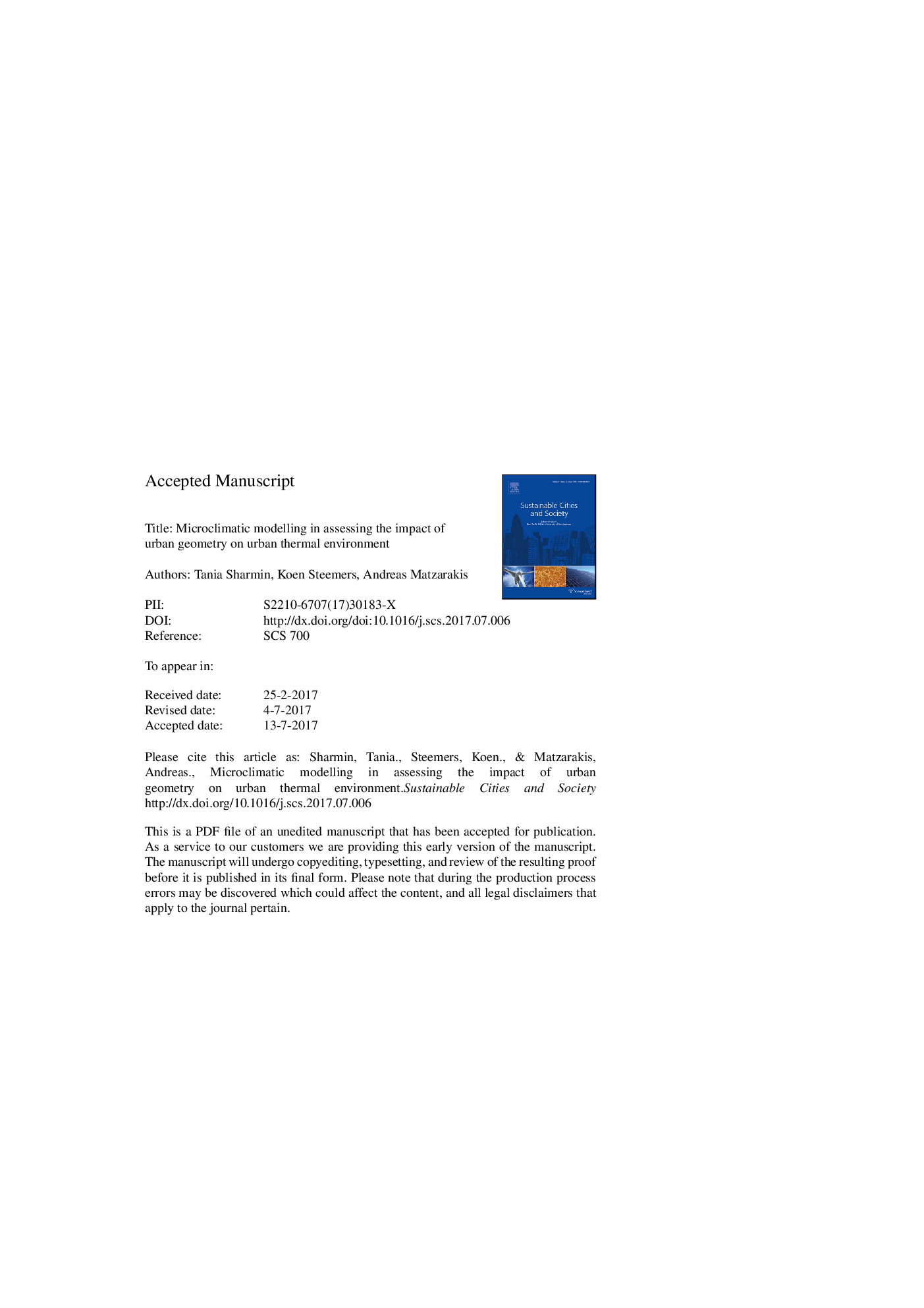| کد مقاله | کد نشریه | سال انتشار | مقاله انگلیسی | نسخه تمام متن |
|---|---|---|---|---|
| 4928190 | 1432014 | 2017 | 36 صفحه PDF | دانلود رایگان |
عنوان انگلیسی مقاله ISI
Microclimatic modelling in assessing the impact of urban geometry on urban thermal environment
ترجمه فارسی عنوان
مدل سازی میکرو کالیفیک در ارزیابی تاثیر هندسه شهری بر محیط حرارتی شهری
دانلود مقاله + سفارش ترجمه
دانلود مقاله ISI انگلیسی
رایگان برای ایرانیان
کلمات کلیدی
موضوعات مرتبط
مهندسی و علوم پایه
مهندسی انرژی
انرژی های تجدید پذیر، توسعه پایدار و محیط زیست
چکیده انگلیسی
Diversity in urban geometry can create significant variation in microclimatic conditions. Especially, in tropical warm-humid context, deep urban canyons with variable building heights perform better than uniform canyons, because taller buildings rising above those around them reduce solar gain and enhance wind speed at the pedestrian level. Field measurements in Dhaka comparing the varying traditional urban forms with the more regular formal residential areas have revealed an average air temperature (Ta) difference of 3.3 °C and a maximum difference of 6.2 °C, and a mean radiant temperature (Tmrt) difference of 10.0 °C. The aim of this paper is to understand the responsiveness of the microclimate simulation tool ENVI-met V4 in identifying the variation in urban geometry as reported in the field measurements. The study aims to make specific comparisons between the measured and the simulated data by analysing a particular challenge in complex geometry. It attempts to demonstrate how ENVI-met could benefit from using the correct input as the boundary condition. While the modelling tool aims to produce good results by using synoptic weather information as boundary conditions, this study suggests that it is important to use representative data from the actual site and that hourly input of climatic variables as boundary information can produce the best results. Results show that modelling is able to predict the relative variations in Tmrt conditions between sites, although highly overestimated. However, in terms of Ta, modelling was unable to produce any variations between different urban geometry characteristics. This indicates that, although ENVI-met can produce sufficiently good results in predicting Ta when hourly forcing is used, it is unable to distinguish between the precise details in urban geometry features that can cause significant variations in microclimatic conditions in real situations. Therefore, further assessment of microclimatic variables is needed for using such modelling techniques in order to evaluate the impact of diversity in urban geometry.
ناشر
Database: Elsevier - ScienceDirect (ساینس دایرکت)
Journal: Sustainable Cities and Society - Volume 34, October 2017, Pages 293-308
Journal: Sustainable Cities and Society - Volume 34, October 2017, Pages 293-308
نویسندگان
Tania Sharmin, Koen Steemers, Andreas Matzarakis,
